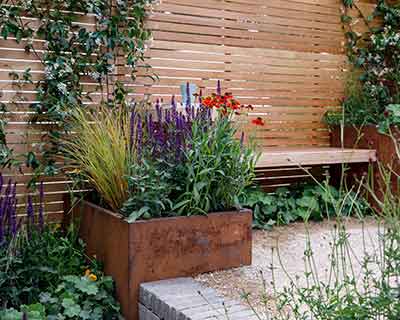10 ways to have a great-looking, low maintenance garden
A great-looking garden doesn’t have to be hard work. Follow these simple guidelines for a no-fuss outdoor space that will bring you joy every time you step into it
1. Ditch the lawn
3. Go large with pots
As a general rule of thumb, big pots are easier to look after than small ones. The smaller the pot, the quicker it dries out and the more watering it will need. Group plants in large pots or use raised planters instead if you have little or no garden soil – such as in many urban gardens.
4. Keep it simple
5. Choose long-lasting combinations
Choose plants with complementing textures and colours for year-round effect - round glossy leaves next to finely-textured grasses, for example - that way you won’t be needing to put in seasonal
6. Search out award-winning plants
Look out for the Award of Garden Merit (AGM) label in garden centres and online. It’s an independent certification from the RHS that the plant is a good variety that’s likely to do well in ordinary garden conditions. The scheme covers everything from trees and shrubs to fruits, flowers and vegetables.
7. Make your lawn easier to cut
If you do have a lawn, install a permanent edge to it, such as a run of bricks or paving stones, or lay small-sized gravel at a lower level than the lawn. This means you won’t have to spend time trimming the edges every time you cut the grass. Smooth out any difficult angles and awkward corners (either by extending the grass or enlarging your borders) to make a shape that’s easier to cut.
8. Extend your garden upwards with self-clinging climbers
Climbers are the perfect way to extend your growing space by making the most of walls, fences or even trees. Self-clinging climbers such as ivy, Virginia creeper and climbing hydrangea attach themselves onto surfaces (rather than needing wires or trellis to grow up). Paint or stain the surface before planting for a low-maintenance, high impact look.
9. Use mulches for less watering and weeding
‘Mulching’ simply means using another material, such as
10. Embrace a bit of wildness
Learning to love wildness and imperfection can help you enjoy your low-maintenance garden, and this can be helped by designing your space accordingly. Here, cracks between the uneven paving stones have been colonised by low-growing plants, and the seating area is surrounded by exuberant planting. A weed or two or a fallen leaf won’t spoil the scene like they would if the garden was made of formal paving and clipped topiary. Embracing the quirks of the natural world can bring great satisfaction.


